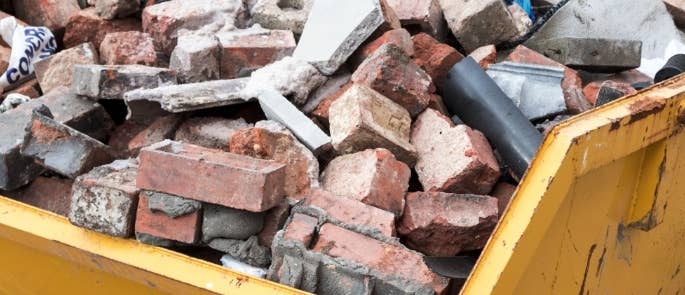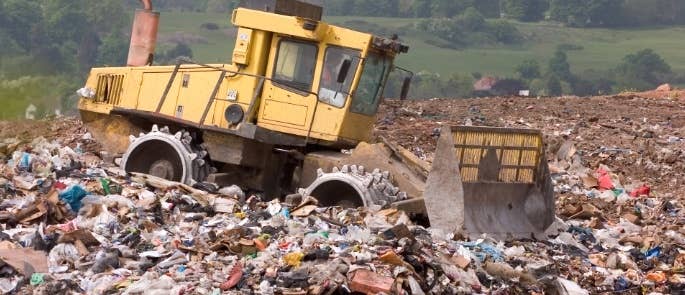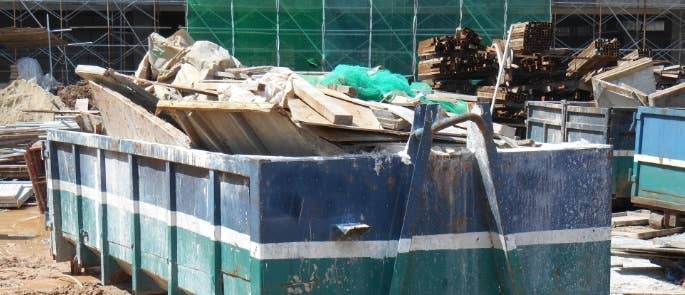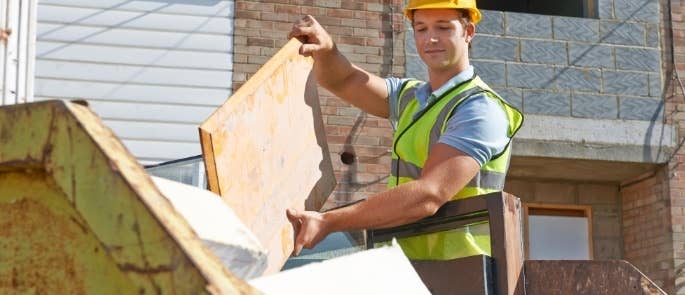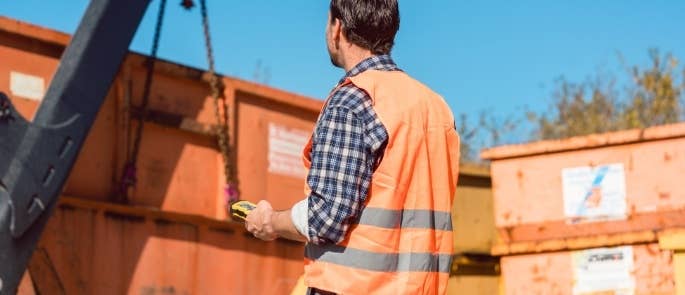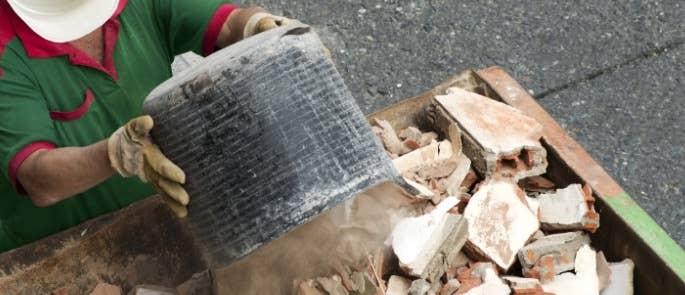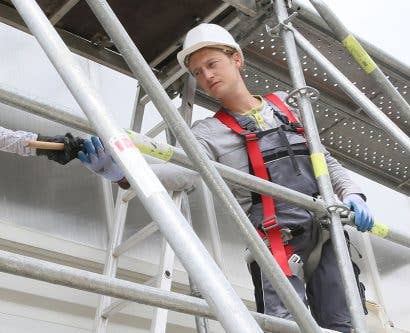How to Dispose of Construction Waste
The production of waste on a construction site is often unavoidable. In fact, in 2018, 62% of waste generated in the UK was from the construction, demolition, and excavation industries.
However, if your business produces waste, it is legally required to properly manage it and confirm that it’s following the waste management hierarchy, which helps you to reduce, reuse, and recycle your waste before disposing of it. This is crucial in order to help the UK minimise its environmental impact and reduce the demands placed on our landfills.
To help you dispose of waste suitably and safely on a construction, demolition, or excavation site, this article will provide you with an overview of how to follow a suitable process.
Why is Construction Waste Management Important?
According to government statistics, in 2018 construction and demolition businesses in the UK generated 67.8 million tonnes of non-hazardous waste. However, 62.6 million tonnes of this was recovered, equating to a recovery rate of 92.3%. This means that, despite the UK’s high output of non-hazardous waste from construction and demolition, our reuse and recycling processes are overall positive.
To help maintain this high standard and limit how much we send to landfills, your business must understand how to properly manage its waste. This is important because resources are finite and you should do your part to help, particularly if they can easily be reused or not wasted in the first place.
In doing so, you’ll also benefit in terms of improving your business’s sustainability productivity, cost-efficiency, and safety.
The benefits of proper construction waste management include:
- Compliance. Under the Waste (England and Wales) Regulations 2011, it is a legal requirement for businesses to control their waste. This applies to those that produce, import or export, carry or transport, keep or store, treat, or dispose of waste.
- High standards of health and safety. Proper waste handling and segregation will protect workers and members of the public from accidents. You’ll prevent materials from being left in inappropriate places. For example, where they could fall onto people or cause a trip hazard.
- Reduced costs. Proper construction waste management reduces costs in multiple ways. You’ll reduce spending by reusing materials and you’ll prevent double costs, which refers to paying for a material that goes to waste and then paying again to have it removed.
- Corporate social responsibility. Managing your waste will help you limit how much you generate and dispose of, as well as ensure it’s properly processed once removed from your site. This will help to conserve our planet’s natural resources and minimise the energy required to transport and reprocess waste.
- Improved reputation. Businesses that demonstrate they’re doing their part for the environment will develop a positive reputation, which improves their relationships with customers and clients. It can even help you gain opportunities with government-funded projects, which often require certain standards of waste management.
- Improved company-wide awareness. When workers adopt safe, sustainable waste management practices at work, they may then feel compelled to apply these practices to other aspects of their work and their personal life.
Need a Course?
Our CDM Regulations Training Course has been designed to provide learners with a practical knowledge of key duty holder requirements under the new CDM Regulations.
What Are the Different Types of Construction Waste?
Construction, demolition, and excavation sites all generate various types of waste, which the Waste (England and Wales) Regulations 2011 requires you to properly manage and dispose of. Inert waste, which includes concrete, bricks, asphalt, stones, and soils, make up the bulk of construction, demolition, and excavation waste, but you will likely also produce various other types.
Common types of construction waste include:
- Concrete, bricks, tiles, cement, and ceramics.
- Wood, glass, and plastic.
- Insulation and asbestos materials.
- Bituminous mixtures, coal tar, and tar.
- Metallic waste (such as pipes).
- Soil, stones, and dredging.
- Paints and varnishes.
- Adhesives and sealants.
It’s important to be aware of what types your business produces, because many of these can be salvaged, reused, or recycled. It also enables you to segregate it all correctly, so your waste collectors can remove it from your site properly and safely. To help you do this, the European Waste Catalogue (EWC), sometimes referred to as LoW (List of Waste), lists all the different types of waste with classification codes.
Have a look at the following table, which sets out the most common types of construction waste you may handle and their EWC codes:
Those marked with * are also classified as hazardous and must be separated from those that aren’t.
Waste Types and Codes
| Waste Type | EWC Code |
|---|---|
| Paper and cardboard packaging | 15-01-01 |
| Plastic packaging | 15-01-02 |
| Wooden packaging | 15-01-03 |
| Metallic packaging | 15-01-04 |
| Composite packaging | 15-01-05 |
| Mixed packaging | 15-01-06 |
| Glass packaging | 15-01-07 |
| Textile packaging | 15-01-09 |
| Concrete | 17-01-01 |
| Bricks | 17-01-02 |
| Tiles and ceramics | 17-01-03 |
| Wood | 17-02-01 |
| Glass | 17-02-02 |
| Plastic (excluding packaging) | 17-02-03 |
| Treated wood, glass, plastic | 17-02-04* |
| Bituminous mixtures with coal tar | 17-03-01* |
| Other bituminous mixtures | 17-03-02 |
| Coal tar and tarred products | 17-03-03* |
| Copper, bronze, brass | 17-04-01 |
| Aluminium | 17-04-02 |
| Lead | 17-04-03 |
| Iron and steel | 17-04-05 |
| Tin | 17-04-06 |
| Mixed metals | 17-04-07 |
| Cables with oil, coal, tar contaminants | 17-04-10* |
| Other cables | 17-04-11 |
| Soil and stones with hazardous substances | 17-05-03* |
| Other soil and stones | 17-05-04 |
| Dredging soil with hazardous substances | 17-05-05* |
| Other dredging soil | 17-05-06 |
| Insulation containing asbestos | 17-06-01* |
| Other insulation with hazardous substances | 17-06-03* |
| Gypsum materials with hazardous substances | 17-08-01* |
| Other gypsum materials | 17-08-02 |
| Unused / unset cement | 17-09-03* |
| Paint / varnish remover | 08-01-21* |
For a full list of codes, you can visit the Pure Plant Recycling website or the following government guidance document on waste classification (page 44 onward).
Before you can send off your waste for recycling and disposal, you will need to include these codes in a classification description. We’ll discuss how to create this later in the article.
You should also be aware that handling some of these types of waste, such as asbestos and those containing hazardous substances, will likely cause your work to fall under other regulations, such as the Control of Asbestos Regulations 2012, the COSHH Regulations 2002, and the Control of Lead at Work Regulations 2002.
Find out more about these regulations and how they apply to you here: Lead, Asbestos, and COSHH.
Reducing Your Construction Waste
Before you dispose of anything on your construction site, you should always consider which waste materials are reusable and recyclable. Keep in mind that the Waste (England and Wales) Regulations 2011 require businesses to confirm that they have applied the waste management hierarchy when transferring waste.
The waste management hierarchy is as follows:
- Reduce.
- Reuse.
- Recycle.
- Dispose.
Taking proactive steps is the best way to meet the hierarchy: you should carry out a site waste management audit to determine what amount you generate and how.
Your audit and plan should consider 3 key factors:
- What the most common materials are on your site that could become waste.
- The different stages of the project that will affect the type of waste generated. For example, in early stages of excavation you’ll likely generate a large amount of concrete waste.
- How you can prevent these materials from becoming waste. This may involve improving your purchasing process, looking into what schemes are available, and communicating with your waste collectors.
After your audit, you should determine how your business will minimise its waste, with a focus on reducing, reusing, and recycling. Your business should create a Site Waste Management Plan (SWMP) to record the results of your audit and your planned methods for managing waste.
Having an SWMP used to be a legal requirement, but as of 2014 this is no longer the case. However, it’s still considered best practice in the industry, as it’s a recognised and widely-used system and reflects positively on your business.
Tips for Reducing Your Construction Waste
In accordance with the waste management hierarchy, you should prioritise reducing construction waste, but it’s also vital to look at ways you can reuse and recycle where this isn’t possible. Here are some tips for doing so on your construction, demolition, or excavation site:
Reduce
Choose what you buy carefully. Meticulous planning will ensure that you don’t buy excess and/or unsuitable materials that end up in a landfill. For example, you can easily prevent unnecessary waste created by offcuts, such as from pipes and timber, by buying more appropriate sizes and lengths in the first place.
Reuse
Think about which leftover materials you can repurpose for another project, such as bricks, windows, roof tiles, etc. It’s also possible to pass materials on or exchange them with other construction sites, as well as join bring-back schemes. Some of these schemes allow you to return packaging to the original manufacturer, for example.
Recycle
A large percentage of your waste is likely recyclable, including metal, paper, plastic, wood, glass, concrete, plasterboard, asphalt, and more. Therefore, you should segregate your recyclable waste so that collectors can remove and process it properly. You can often receive advice about what can and can’t be recycled, as well as how to separate and store it, from the manufacturer of your materials and your waste management contractor.
Keep in mind that there are also recycling schemes available for construction site materials. For example, CIRIA (the construction industry research and information association) has an internet register of recycling sites. Similarly, Recovinyl – which is an initiative by the European PVC value-chain – enables you to recycle PVC waste. You can also talk to the manufacturer of your materials to see if they have recycling schemes.
Disposing of Your Construction Waste
If you determine that certain materials cannot be reduced or reused, then your remaining options are to recycle and/or dispose of them. The most practical and effective construction waste disposal method is to hire skips from a waste removal company. You should ensure that you hire the necessary number of skips to separate recycling and waste, as well as hazardous and non-hazardous waste.
You also need to create a classification description and waste transfer notes before you send off waste for recycling or disposal, which we’ll look at in more detail below.
Hiring Skips for Your Construction Waste
Before hiring skips for your waste, you should check with the Environment Agency that the waste collector has the correct licensing to carry waste. Disposing of waste at an unauthorised site could make you liable to pay Landfill Tax.
Furthermore, you should determine whether your skips will be sited on private land. Otherwise, you will need to acquire a skip permit from your local authority.
When deciding on what skips to hire, be aware that there are three different types:
- A small builder’s skip. This is 6 cubic yards / 6,000 kg (approximately 50-60 bin bags).
- A large builder’s skip. This is 8 cubic yards / 8,000 kg (approximately 60-80 bin bags) and is the most common size.
- A maxi skip. This is 12 cubic yards /12,000 kg (approximately 100-120 bin bags) and is usually used for larger works.
You should locate your skips in a suitable and safe location that workers can easily access. Furthermore, you should have clear signage, so workers can discard of materials in the appropriate skip, and provide them with PPE to minimise risks. For example, when handling glass waste, they must wear steel toe cap boots. Clear instructions and training are therefore vital.
How to Create Classification Descriptions
Before you can send off waste for recycling or disposal, you must create a classification description for it. This helps you decide how to handle the waste and provide the necessary paperwork to waste contractors.
A classification description must include:
- The waste classification code (as described earlier in this article).
- Whether or not it’s hazardous.
- The type of premises or business where the waste was produced.
- The name of the substance or substances.
- The process that produced the waste.
- A chemical and physical analysis.
- Any special problems, requirements, or knowledge related to the waste.
For further advice, you can visit the government’s information page on classification descriptions.
How to Create Waste Transfer Notes
According to the government website, “For each load of non-hazardous waste you move off your premises, you need a waste transfer note or a document with the same information, such as an invoice.” You can either register online or download a waste transfer note to fill in on paper. Its purpose is to include further information about the waste you produced and clarify the transferal process.
Your business and the business collecting your waste both need to:
- Fill in the sections of the waste transfer note that apply.
- Sign it.
- Keep a copy for 2 years.
- Show it to an enforcement officer from your local council or the Environment Agency if asked.
For further advice or to download a waste transfer note, you can visit the government’s information page.
The law is clear about how you should manage and dispose of your waste on construction, demolition, and excavation sites. As long as you follow the processes outlined in this article and properly train everyone involved in handling waste, you can easily comply with the law, maintain safety, and dispose of waste sustainably.
What to Read Next:
- Protecting the Public During Construction Projects
- Ten Common Construction Site Hazards
- 15 Workshop Hazards and How to Avoid Them
- Pollution from Construction: What Are the Types & How Can We Prevent It?
- Toolbox Talks in Construction: Guidance on Meeting Topics and Resources
- CDM Regulations Quiz
- CDM Regulations – When is my Project Notifiable?
- CDM Regulations Awareness Training


